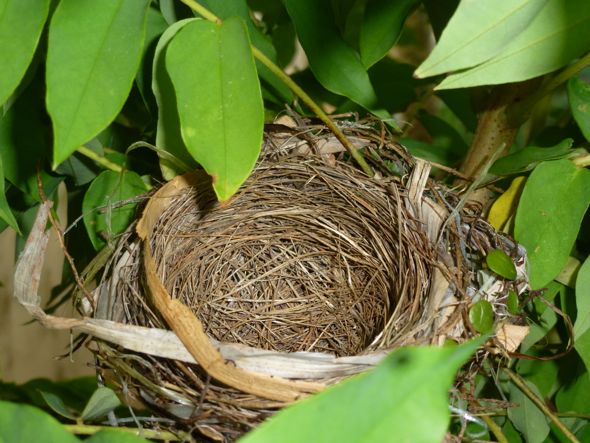The link to this paper on self-medication among animals came from field ornithologist Wang Luan Keng. The article triggers this post on self-medication among birds.
Many of us are familiar with dogs and cats seeking out certain grasses to chew on. We always assume that they do this as a form of self-medication. The above paper proves us right. Yes, wildlife often self-medicate in some form or other.
According to Clayton & Wolfe (1993), self-medication among birds (as well as wild animals) comes in the following forms of topical application, ingestion, absorption and proximity.
![Crow anting with ants (Photo credit: Levina de Ruijter]](https://besgroup.org/wp-content/uploads/Crow-anting-Levina-de-Ruijter-7.jpg)
1. Topical Application
We see this in anting where birds make use of ants, millipedes and even plant sap to rid their feathers of ecto-parasites. Ants provide formic acid, millipedes chemical secretion and plants the chemicals in the sap to do the job.
2. Ingestion
This involves eating plant parts, comparable to dogs and cast eating grasses when they are not feeling well. A good example is parrots eating clay to neutralise toxins in the food they consume.
3. Absorption
This involves absorption of the medicinal substances across the skin or mucous membrane. I have so far not been successful in locating examples for birds.

4. Proximity
Starlings have been reported to select certain aromatic plants with their sense of smell to line their nests. It is claimed: “the aromatic compounds emitted by these plants boost immune systems of chicks and reduce their bacterial loads.” Blue Tits (Cyanistes caeruleus) that incorporate aromatic plants in their nests have been found to protect their chicks from bacteria (Mennerat et al., 2009). House sparrows (Passer domesticus) have been observed to line their nests with materials from the neem tree (Azadirachta indica) but change to quinine-rich leaves of the Krishnachua tree (Caesalpinia pulcherrima) during an outbreak of malaria; quinine controls the symptoms of malaria LINK.
Dato’ Dr Amar-Singh HSS documented a long list of birds feeding on the neem fruits LINK. “Do these birds like the fruit because it has a sweet pulp? Or rather because it has medicinal value which the birds know at an innate level?” wrote Amar. After all, there are plentiful of data supporting the azadirachtin found in neem fruits that kills bacteria and other parasites (Tipu 2002).
Current local knowledge
Other than anting, there have been no local documentation that I know of on self-medication among birds. For a start, photographers and even birders could make an effort to document or even study nests and try identify nesting materials, especially those that are still green. This would be a start in trying to identify any medicinal plants that are brought to the nests.

Documentation on nests have so far been superficial: LINK 1, LINK 2, LINK 3 and LINK 4. These could be the beginning of a new aspect of bird behavior we could look out for.
References:
1. Clayton, D.H, & N.D. Wolfe, 1993. The adaptive significance of self-medication. Trends Ecol Evol. 8(2):60-3.
2. Mennerat, A., P. Mirleau, J. Blondel, P. Perret, M.M. Lambrechts & P. Heeb, 2009. Aromatic plants in nests of the blue tit Cyanistes caeruleus protect chicks from bacteria. Oecologia 161:849–855. PDF.
3. Tipu, M. A., Pasha, T. N., Ali, Z. (2002). Comparative Efficacy of Salinomycin Sodium and Neem Fruit (Azadirachta Indica) as Feed Additive Anticoccidials in Broilers. International Journal of Poultry Science. 2002, Volume 1 (4), Pg 91-93. (available from http://www.doaj.org/doaj?func=abstract&id=316017).
YC Wee
Singapore
2nd July 2017









2 Responses
Good write up YC
Thanks Amar.